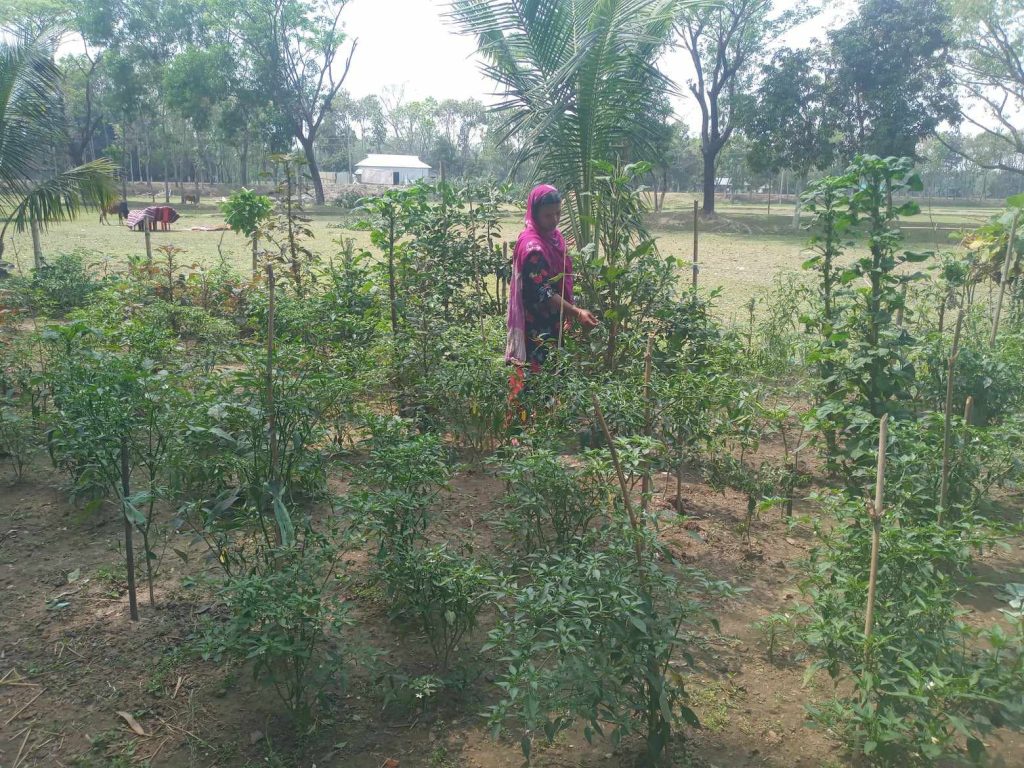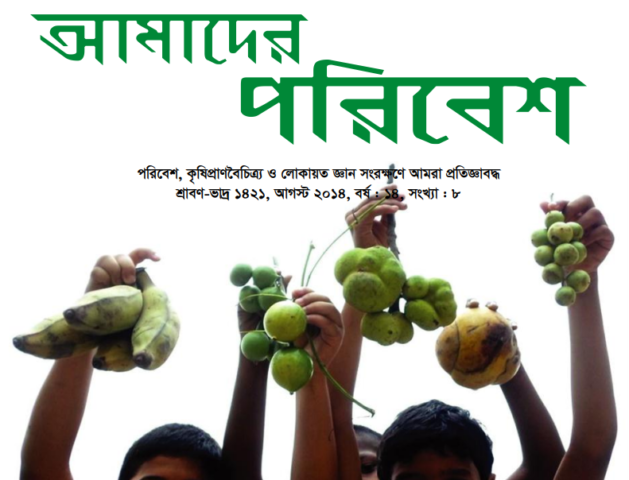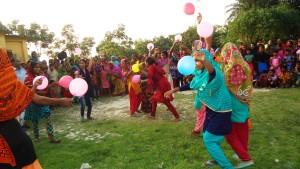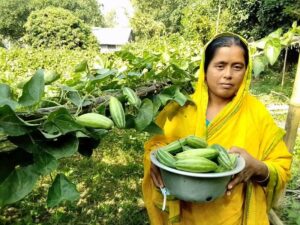Munna Rongdi, from Kamalakanda, Netrokona.
Mafuza Khatun (36) lives at Gauripur village in Lengura union, Kalmakanda upazila, Netrokona district. Her Husband Mofazzal Mia (40) is a professional auto driver. Their family consists of one son and two daughters. Mafuza Khatun is an ambitious farmer. Mafuza family owns 128 decimal of arable land and 24 decimals of homestead land. She meets the nutritional needs of the family by growing healthy food on these lands throughout the year. She grows veggies during the winter, summer, and monsoon seasons and earn additional cash selling the veggies after meeting her family members’ nutritional demand.
Mafuza Khatun grows red spinach, slender amaranth, radishes, beans, gourds, tomatoes, sweet pumpkins, wax gourd, brinjals, chillies, malabar spinach, jute spinach, luffa, sponge gourd, yard long leaf, bitter gourds, and other vegetables and spinaches. Her spouse also helps her to produce veggies in an eco-friendly manner which she learnt from BARCIK participating in different events arranged by the organization. Seeing and learning the benefits to adopt eco-friendly farming she also encourages others to do the same.
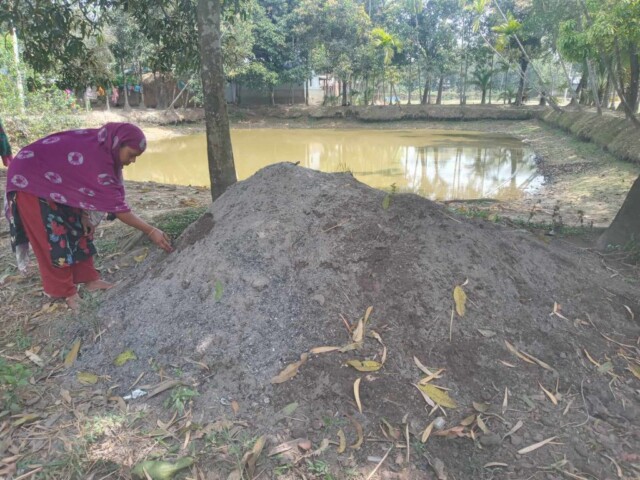
Mahfuza Khatun attempts to adopt completely organic farming in agriculture. She maintains a combination of cow manure and ash together, which serves as both organic fertilizer and insecticide. She claims that ‘ash helps to control insects and keeps grass from growing, while excrement functions as organic fertilizer.’ She boils neem leaves in 5 liters of water, combines them, and attempts to control other insects and wrapping leaves for 21 days.
She keeps cow urine in a container for a month to produce liquid fertilizer, which is combined with water. She applies this to the roots of seedlings, vegetables, and creeping plants such as yard long leaf, cucumber, malabar spinach and so on. It is a liquid fertilizer that helps plants produce fresh and nutritious yields. She learnt this during the organization’s meeting from experienced farmers. She stated that half a litter or one litter is utilized for each tree.
According to Mahfuza’s observation, these types of practices are now done by four to five families, and she expects that these methods will become more popular in the future. She does not only grows veggies throughout the year, but also contributes significantly to seed conservation. She has now protected the seeds through cultivating and harvesting the red spinach, slender amaranth, malabar sdpinach, and jute leaves seeds that BARCIK gave. She has also been saving gourd and bean seeds from earlier.
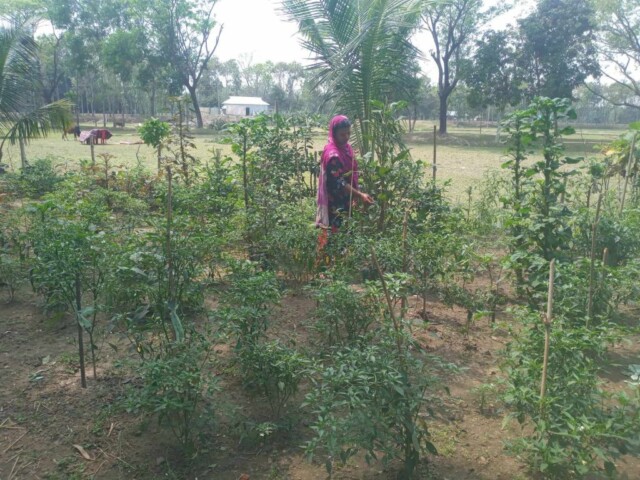
Apart from cultivating vegetables, Mahfuza Khatun rears livestock. She has ducks, chickens, cows, and goats at her home. Last year, she earned BDT 20,000 by selling chickens and goats. A three-katha pond is located next to her residence. There, three families (father-in-law, brother-in-law, and they) collaborate to satisfy their protein needs throughout the year by cultivating fish. The pond’s banks are lined with palm, betel, lemon, and mango trees. BARCIK closely observed Mahfuza Khatun’s ideas, experiences and activities and chose her home as a Shatabari thinking that this house could become one of the agro-ecological learning centres in the future which BARCIK is striving to promote.
Translated by Shaheda Purna

